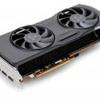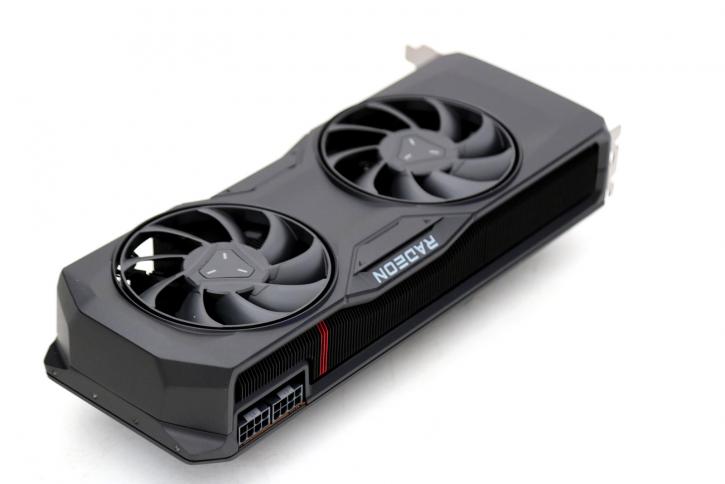Introduction
Radeon RX 7800 XT review
With 16GB and a proper amount of raw shader performance
AMD has introduced the Radeon RX 7700 XT and 7800 XT, expanding its product lineup within the mainstream to the high-end graphics segment. The launch of these GPUs signifies a substantial addition to AMD's offerings. Despite the delay in their release, the cards boast impressive shader horsepower, complemented by 12GB and 16GB GDDR6 graphics memory. These attributes position the cards to have a significant impact, particularly within the WQHD monitor resolution domain. Hoever even the WQHD comes at a price these days as the 7700 XT starts at 449, and the 7800 XT model starts at 499 USD. This review is based on the latter product in a reference model. For a while now, rumours have been flooding the graphics card arena, and as so often, most of them become an actuality. Meet the new Navi 32-based GPU models. The Radeon 7800 XT with its 16GB 256-bit memory configuration at 19.5 Gbps, is bound to impress. This particular iteration is poised to utilize the complete 60 CU / 3840 Shader processors setup of the GPU and boasts a Total Board Power (TBP) of 263W. The AMD Radeon RX 7800 XT GPU is built upon the Navi 32 SKU framework and thus chiplets, incorporating four Memory Controller Domains (MCDs). The GPU core boasts 3840 cores, meticulously distributed across 60 Compute Units to enhance performance. Additionally, the GPU incorporates a substantial 64 MB Infinity Cache, functioning at an 18 Gbps pin speed, thereby yielding a commendable total bandwidth of 576 GB/s. The second Navi 32 variant, aka Radeon RX 7700 XT, sees a friendly 54 CU/3456 shader processor configuration, complemented by 12GB memory on a 192-bit bus running at an effective 18 Gbps data rate. This points towards a Navi 32 iteration with one of the four MCDs disabled, resulting in 48 MB of Infinity Cache. The core setup of the RX 7700 XT is anticipated to encompass approximately 54 Compute Units, housing a total of 3456 stream processors.
| AMD Radeon RX 7000 Specifications | |||||
|---|---|---|---|---|---|
| Radeon RX | 7900XTX | 7900 XT | 7800 XT | 7700 XT | 7600 |
| Architecture | RDNA3 (TSMC N5) | RDNA3 (TSMC N5) | RDNA3 (TSMC N6) | RDNA3 (TSMC N6) | RDNA3 (TSMC N6) |
| GPU | Navi 31 XTX | Navi 31 XT | Navi 32 XL | Navi 32 XT | Navi 33 |
| GPU Clusters | 96 CUs | 84 CUs | 60 CUs | 54 CUs | 32 CUs |
| FP32 Cores | 6144 | 5376 | 3840 | 3456 | 2048 |
| Game Clock | 2.3 GHz | 2.0 GHz | 2.124 GHz | 2.171 GHz | 2.25 GHz |
| Boost Clock | 2.5 GHz | 2.4 GHz | 2.43 GHz | 2.54 | 2.625 GHz |
| Memory | 24GB G6 | 20GB G6 | 16GB G6 | 12 GB G6 | 8GB G6 |
| Memory Bus | 384-bit | 320-bit | 256-bit | 192-bit | 128-bit |
| Memory Speed | 20 Gbps | 20 Gbps | 19.5 Gbps | 18 Gbps | 18 Gbps |
| L3 Cache | 96 MB | 80 MB | 64 MB Gen2 | 48MB Gen2 | 32 MB Gen2 |
| Board Power | 355W | 315W | 263W | 245W | 165W |
| Power Connectors | 2 × 8-pin | 2 × 8-pin | 2 × 8-pin | 2 × 8-pin | 1 x 8-pin |
| PCIe Interface | Gen4 x16 | Gen4 x16 | Gen4 x16 | Gen4 x16 | Gen4 x8 |
| MSRP | $999 | $899 | $499 | $449 | $269 |
| Launch Date | December 2022 | December 2022 | September 2023 | September 2023 | May 2023 |
AMD's recent product aims to achieve optimal performance levels. One method employed is the enhancement of voltages and clock speeds, a straightforward approach to improving speed. Nevertheless, this decision has repercussions. A noticeable outcome is the GPU's elevated power consumption, which stands at 263W, marking a ~30% uptick when juxtaposed with the RTX 4070 from Nvidia. Given these figures, it's reasonable to speculate that third-party cards might adjust their TGP (total graphics power) to approach 300W, especially in models with overclocking capabilities. This could suggest a trend toward heftier designs.


